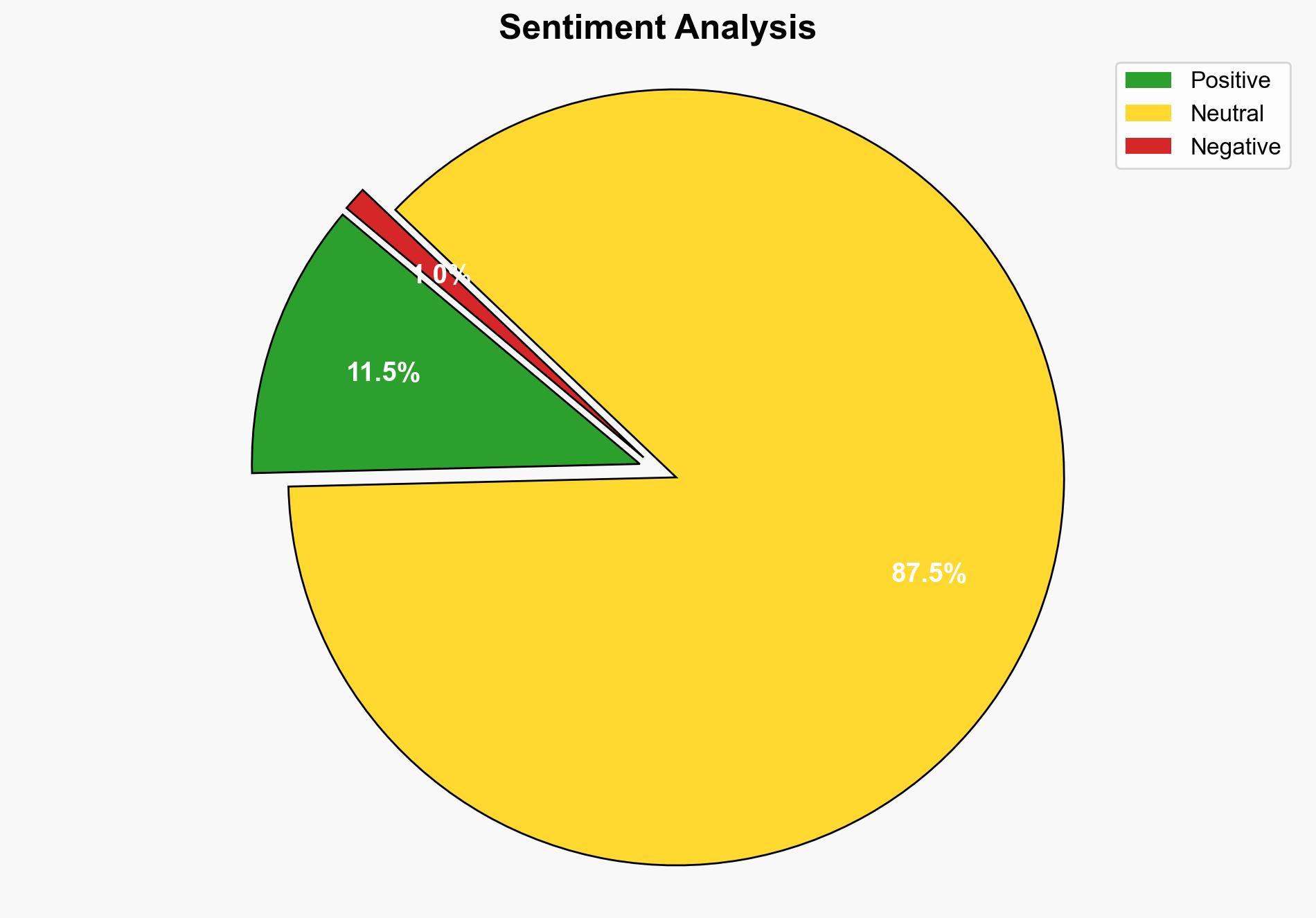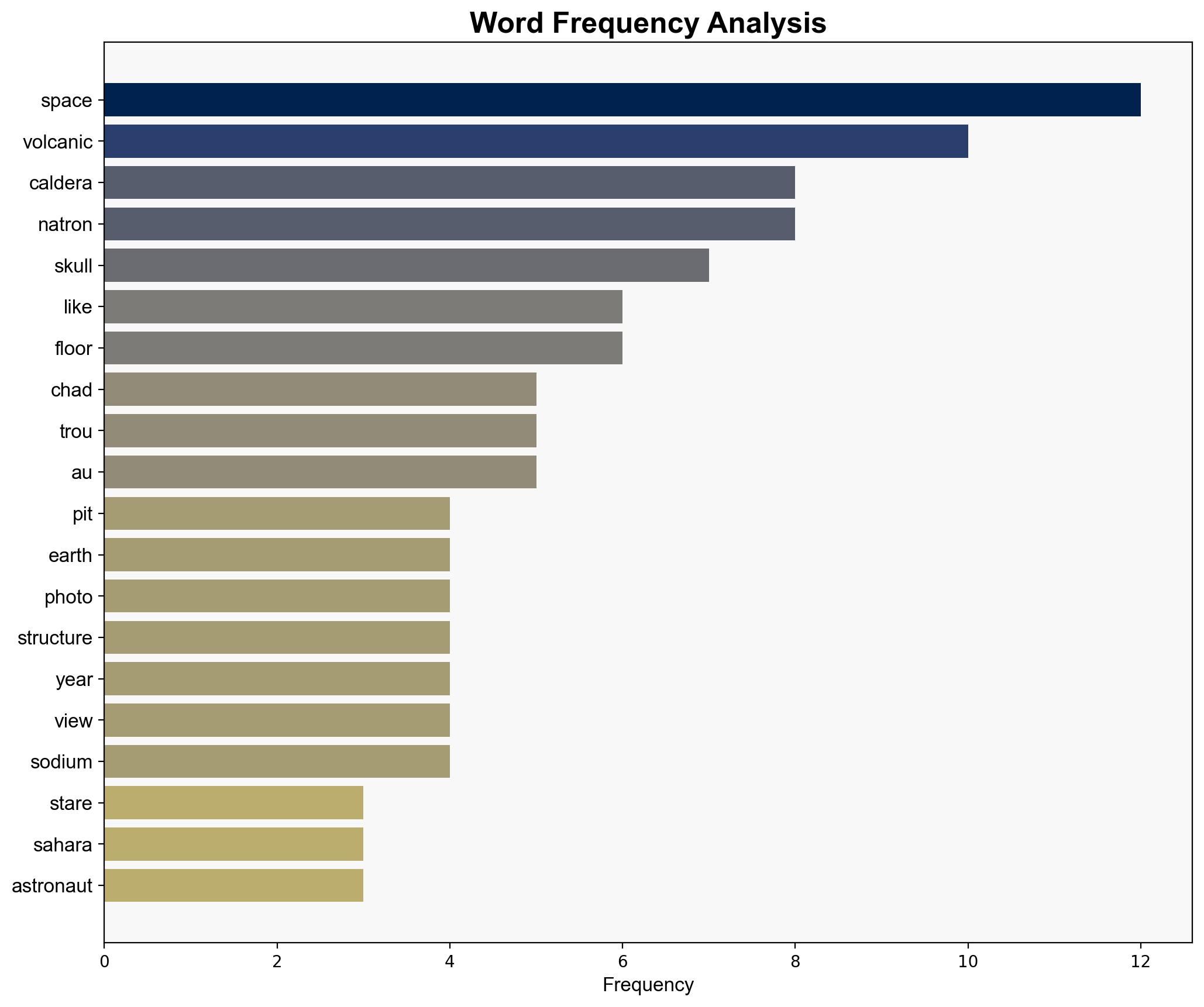Glowering ‘skull’ stares upward from a giant volcanic pit in the Sahara Earth from space – Live Science
Published on: 2025-10-28
Intelligence Report: Glowering ‘skull’ stares upward from a giant volcanic pit in the Sahara Earth from space – Live Science
1. BLUF (Bottom Line Up Front)
The analysis suggests that the skull-like appearance of the volcanic caldera in Chad is a natural geological formation rather than a result of human activity or extraterrestrial influence. The most supported hypothesis is that the formation is a product of natural erosion and volcanic activity. The confidence level in this hypothesis is high. Recommended action includes monitoring for any potential geological activity and leveraging the site for educational and tourism opportunities.
2. Competing Hypotheses
1. **Natural Geological Formation Hypothesis**: The skull-like appearance of the caldera is a result of natural geological processes, including volcanic activity and erosion over thousands of years.
2. **Anthropogenic or Extraterrestrial Influence Hypothesis**: The formation is a result of human intervention or extraterrestrial influence, possibly as a form of art or communication.
Using ACH 2.0, the natural geological formation hypothesis is better supported by the evidence of volcanic activity and erosion patterns consistent with known geological processes. The anthropogenic or extraterrestrial hypothesis lacks credible supporting evidence and contradicts known geological data.
3. Key Assumptions and Red Flags
– **Assumptions**: The natural geological processes are assumed to be the primary shaping force of the caldera. It is assumed that no significant human or extraterrestrial activity has altered the site.
– **Red Flags**: The lack of direct evidence for human or extraterrestrial influence should not be overlooked. The possibility of undiscovered historical artifacts or geological anomalies remains.
– **Blind Spots**: Limited access to the site for detailed study could lead to oversight of subtle anthropogenic influences.
4. Implications and Strategic Risks
The site, while primarily of geological interest, could become a focal point for tourism, impacting local economies. Misinterpretation or sensationalism could lead to misinformation, affecting public perception. Geopolitically, the site is unlikely to pose significant risks but could become a point of interest in regional cultural narratives.
5. Recommendations and Outlook
- Conduct detailed geological surveys to confirm the natural formation hypothesis and rule out any anthropogenic influences.
- Develop the site as a tourist attraction with educational programs to promote scientific understanding.
- Monitor for potential misinformation campaigns that could exploit the site’s unusual appearance.
- Scenario Projections:
- Best Case: The site becomes a renowned geological and tourist site, boosting local economies.
- Worst Case: Misinformation leads to geopolitical tensions or economic exploitation.
- Most Likely: The site remains a niche interest with moderate tourism and educational value.
6. Key Individuals and Entities
– Harry Baker, a senior staff writer at Live Science, who reported on the geological features.
7. Thematic Tags
geological formations, tourism potential, misinformation risks, regional development





